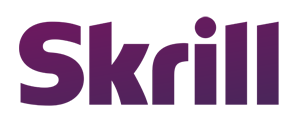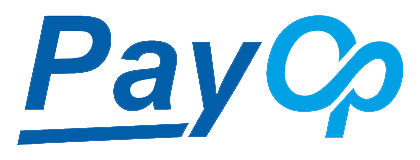Thanks, it worked like a charm!
User Tag List
Results 16 to 30 of 54
-
03-08-2009 #16Member

- Reputation
- 8
- Join Date
- Dec 2008
- Posts
- 88
- Thanks G/R
- 0/0
- Trade Feedback
- 0 (0%)
- Mentioned
- 0 Post(s)
- Tagged
- 0 Thread(s)
-
03-08-2009 #17Active Member


- Reputation
- 39
- Join Date
- Mar 2009
- Posts
- 340
- Thanks G/R
- 0/2
- Trade Feedback
- 0 (0%)
- Mentioned
- 0 Post(s)
- Tagged
- 0 Thread(s)
Seriously? Looking at the math, one would think you need to set a very high amount to take advantage of 32-bits rollover. But if it does work, then it seems Blizz needs to work on their cut calculation instead of multiplying by 15 then divide by 100.
OTOH if it's divide by 100 then multiply by 15, you will need a lot more than 28kg to avoid neutral AH fees.
Perhaps a SS of seller's money (with name blacked out naturally), showing the total amount from AH item and the cut would help prove or disprove this.
-
03-08-2009 #18Member

- Reputation
- 5
- Join Date
- Mar 2009
- Posts
- 9
- Thanks G/R
- 0/0
- Trade Feedback
- 0 (0%)
- Mentioned
- 0 Post(s)
- Tagged
- 0 Thread(s)
-
03-08-2009 #19Member

- Reputation
- 31
- Join Date
- Oct 2008
- Posts
- 190
- Thanks G/R
- 0/0
- Trade Feedback
- 0 (0%)
- Mentioned
- 0 Post(s)
- Tagged
- 0 Thread(s)
-
03-08-2009 #20Member

- Reputation
- 5
- Join Date
- Mar 2009
- Posts
- 9
- Thanks G/R
- 0/0
- Trade Feedback
- 0 (0%)
- Mentioned
- 0 Post(s)
- Tagged
- 0 Thread(s)
what UnoriginalGuy22 says is true to a certain extent since the limit for gold would be 2,147,483,647 which is the decimal of 7FFF FFFF (max for a signed number). The number however must go above 2 x 2,147,483,647 to go above FFFF FFFF and be reset to 0000 0000. now since 2 x 2,147,483,647 = 4,294,967,295 and this is less than 4,294,967,310 this causes an overflow
+4,294,967,310
- 4,294,967,295
-----------------------
+0,000,000,015
TL;DR The number when multiplied by 15 (or 10) must be above 4,294,967,295 (or 429496g 72s 95c)Last edited by Killerpet; 03-08-2009 at 11:21 PM.
-
03-08-2009 #21Member

- Reputation
- 1
- Join Date
- Sep 2007
- Posts
- 11
- Thanks G/R
- 0/0
- Trade Feedback
- 0 (0%)
- Mentioned
- 0 Post(s)
- Tagged
- 0 Thread(s)
Work! on private server, tested
 i don't know if this work on retail, and if it is risk or not
i don't know if this work on retail, and if it is risk or not 
-
03-08-2009 #22Member

- Reputation
- 11
- Join Date
- Jun 2008
- Posts
- 105
- Thanks G/R
- 0/0
- Trade Feedback
- 0 (0%)
- Mentioned
- 0 Post(s)
- Tagged
- 0 Thread(s)
-
03-09-2009 #23
 Active Member
Active Member

- Reputation
- 50
- Join Date
- Jan 2009
- Posts
- 608
- Thanks G/R
- 1/12
- Trade Feedback
- 0 (0%)
- Mentioned
- 0 Post(s)
- Tagged
- 0 Thread(s)
i didn't understand shite tbh lol
I am Swedish and I like green!
and I like green!  And most other colours too!
And most other colours too!
-
03-09-2009 #24Member

- Reputation
- 8
- Join Date
- Jul 2008
- Posts
- 22
- Thanks G/R
- 0/0
- Trade Feedback
- 0 (0%)
- Mentioned
- 0 Post(s)
- Tagged
- 0 Thread(s)
I tested this on the PTR, it did not work, and the PTR is about as close to retail as you're going to get when compared to private servers.
-
03-09-2009 #25Member

- Reputation
- 1
- Join Date
- Mar 2009
- Posts
- 8
- Thanks G/R
- 0/0
- Trade Feedback
- 0 (0%)
- Mentioned
- 0 Post(s)
- Tagged
- 0 Thread(s)
Anyone with a screenshot? 2 Yes 1 No test atm

-
03-09-2009 #26Active Member


- Reputation
- 22
- Join Date
- Jan 2009
- Posts
- 47
- Thanks G/R
- 1/0
- Trade Feedback
- 0 (0%)
- Mentioned
- 0 Post(s)
- Tagged
- 0 Thread(s)
Wow gold value is signed int32, this got profen already.
And I strongly doubt that blizzard has programmers that calculate fees with the risk of getting an overflow by first multiplying...
-
03-09-2009 #27Member

- Reputation
- 5
- Join Date
- Mar 2009
- Posts
- 9
- Thanks G/R
- 0/0
- Trade Feedback
- 0 (0%)
- Mentioned
- 0 Post(s)
- Tagged
- 0 Thread(s)
Ill try explain. When people are counting they count like this:
0,1,2,3,4,5,6,7,8,9 and then start all over again with a 1 in front of it 10,11,12,13,14,15,16,17,18,19 and they keep on going. changing the highest number every time they get past 9. this is called base 10 because there are 10 different numbers
To make things easier to understand when looking at data people look at it in terms of hex or base 16. this means it counts from 0 to 15 then changes the highest number afterwards.
We then use letters for the numbers after nine
This comes out as:
So counting from 0 - 39 looks like this:Code:DECIMAL: 0 1 2 3 4 5 6 7 8 9 10 11 12 13 14 15 HEXADECIMAL: 0 1 2 3 4 5 6 7 8 9 A B C D E F
Code:Dec Hex | Dec Hex 00 00 | 20 14 01 01 | 21 15 02 02 | 22 16 03 03 | 23 17 04 04 | 24 18 05 05 | 25 19 06 06 | 26 1A 07 07 | 27 1B 08 08 | 28 1C 09 09 | 29 1D 10 0A | 30 1E 11 0B | 31 1F 12 0C | 32 20 13 0D | 33 21 14 0E | 34 22 15 0F | 35 23 16 10 | 36 24 17 11 | 37 25 18 12 | 38 26 19 13 | 39 27
So you see, each time we get to an F and try add 1 we make the F = 0 and add 1 to the highest number (just like if we made the 9 = 0 and increase the highest number in base 10)
If we add 1 to F it becomes 10, if we add 1 to FF it becomes 100, if we add 1 to FFF it becomes 1000 and so on.
Now if we can only hold enough information in memory for FFFF FFFF (8 F's) and we try add 1 to it we will end up with 1 0000 0000. But like i said, the memory can only see the last 8 digits. So this 1 000 000 becomes 0000 0000.
Hope this helps you understand, if it doesnt then reply here and i can try a different approach
-------------------
If you understood everything above and want to know what signed int32 is it is this:
There are 32 bits that can either be 0's or 1's
This looks like this: 00000000000000000000000000000000
These are split into groups of 4 to make it easier to read
This looks like this: 0000 0000 0000 0000 0000 0000 0000 0000
Each of these groups of 4 have 16 different ways they can be arranged:
0000 -> 0001 -> 0010 -> 0011 -> 0100 -> 0101 -> 0110 -> 0111 -> 1000 -> etc...
(0 -> 1 -> 2 -> 3 -> 4 -> 5 -> 6 -> 7 -> 8 -> etc...)
These different arrangements take up the different hex values shown above (0 - F)
This means that the value of a group of 4 bits can vary from 0000 to 1111 (or 0 to F)
So instead of each 0000 i will write the hex value:
We end up with 0 0 0 0 0 0 0 0 up to F F F F F F F F
Grouping these together into groups of 4 leaves:
0000 0000 to FFFF FFFF
Now the first bit of the first number (shown here in bold) tells us if the number is positive or negative (we will assume 0=positive, 1=negative)
0000 0000 0000 0000 0000 0000 0000 0000
This means that for a positive number the numbers can go from:
0000 0000 0000 0000 to 0111 1111 1111 1111
or
0000 0000 to 7FFF FFFF
(Since 0111 = 7 and 1111 = F)
-
03-09-2009 #28Member

- Reputation
- 6
- Join Date
- Mar 2007
- Posts
- 63
- Thanks G/R
- 0/0
- Trade Feedback
- 0 (0%)
- Mentioned
- 0 Post(s)
- Tagged
- 0 Thread(s)
well, just post sum enchanting thingy and you wont have to pay a fie... i think
-
03-09-2009 #29Member

- Reputation
- 5
- Join Date
- Mar 2009
- Posts
- 9
- Thanks G/R
- 0/0
- Trade Feedback
- 0 (0%)
- Mentioned
- 0 Post(s)
- Tagged
- 0 Thread(s)
They are talking about the auction houses cut from the seller when an auction is successful. For same faction AH it is 10% (or maybe 5%) and for neutral AH it is 15%
So even it you put up enchanting mats on neutral AH for 100g it will cost you nothing for the deposit but if it sells you will only get 85g back
-
03-09-2009 #30Banned

- Reputation
- 112
- Join Date
- Dec 2008
- Posts
- 49
- Thanks G/R
- 0/0
- Trade Feedback
- 0 (0%)
- Mentioned
- 0 Post(s)
- Tagged
- 0 Thread(s)
Similar Threads
-
Transfer gold Horde/alliance without paying anything
By mageblast in forum World of Warcraft ExploitsReplies: 13Last Post: 02-18-2011, 12:51 PM -
Horde + Alliance on the same server
By gogobananas in forum World of Warcraft ExploitsReplies: 20Last Post: 10-24-2007, 02:51 AM -
Is there a way to transfer gold between servers?
By rvby2k5 in forum World of Warcraft GeneralReplies: 1Last Post: 06-14-2007, 01:01 PM -
Best way to Transfer Gold between Faction?
By pandaman in forum World of Warcraft GeneralReplies: 0Last Post: 12-25-2006, 08:19 AM


















